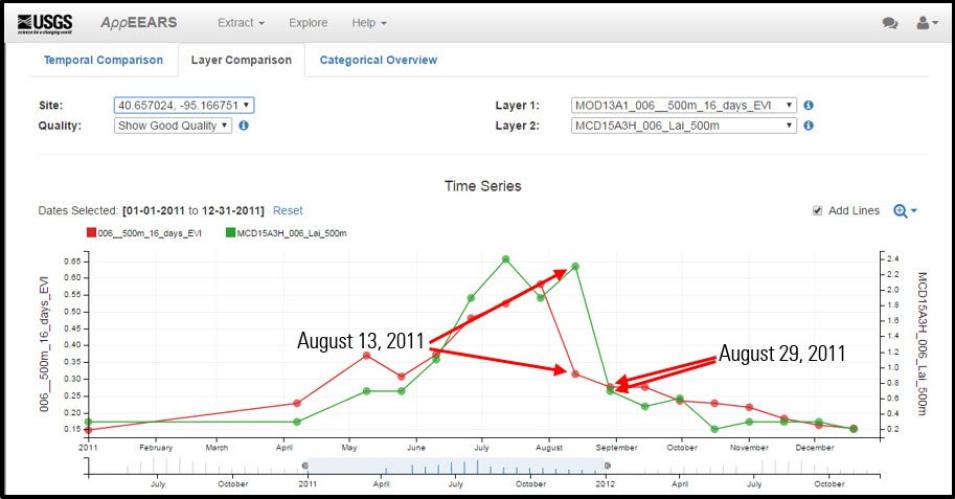Introduction
As summer draws near in the United States, it is important to consider the threatening weather that accompanies this season. For instance, the Central Plains region experiences frequent hail storms during the summer months. On August 18, 2011, a hail storm occurred near the meeting corners of Nebraska, Iowa, and Missouri, causing extensive damage to row crops in the area (Molthan and others 2013). Two substantial hail scars from this storm near the towns of Maryville, Missouri, and Clarinda, Iowa are evident in imagery from the Moderate Resolution Imaging Spectroradiometer (MODIS) instruments aboard the Terra and Aqua satellites. Vegetation Indices can be derived from data collected by MODIS, which provide spatiotemporal information on vegetation health, or quality, through measurements such as the Normalized Difference Vegetation Index (NDVI) and Enhanced Vegetation Index (EVI). Additionally, MODIS Leaf Area Index (LAI) data products provide spatiotemporal information of the quantity of leaf cover and vegetation.
The images below show changes in vegetation before and after the hail storm using the Combined Terra and Aqua MODIS LAI data product (MCD15A3H).
